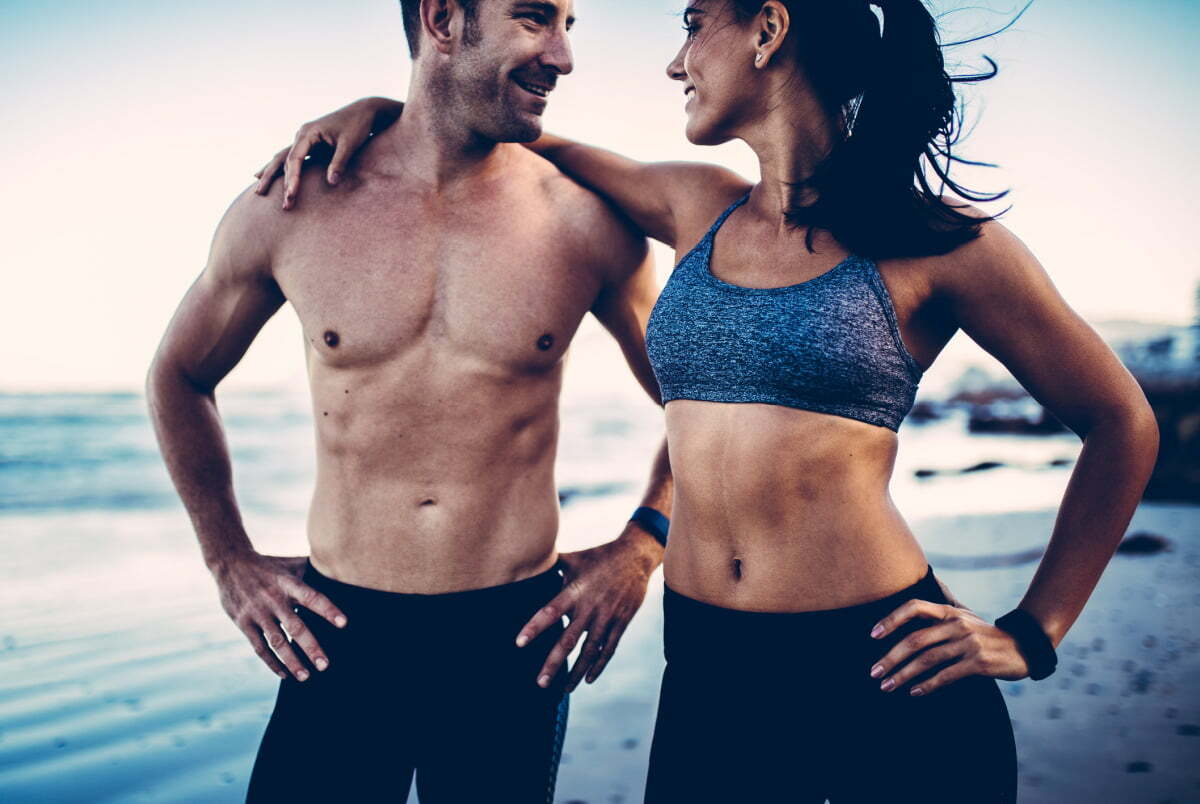CoolSculpting vs. CoolTone: Which One is Right for Me?

Even the fittest of us have pockets of fat that we can’t get rid of no matter how well we eat or how much we exercise. Similarly, you may be hitting the gym six days a week without noticing any significant muscle definition. The truth is, genetics and age play a large role in how we gain and lose both weight and muscle mass, and, unfortunately, these factors are completely outside of our control. Fortunately, however, two innovative technologies—CoolSculpting® and CoolTone™—allow us to enhance our physiques without surgery. But what are the differences between CoolSculpting and CoolTone, and how do you know which one is right for you?
Which procedure is less invasive?
CoolSculpting and CoolTone are both non-surgical procedures, meaning neither one is invasive. CoolSculpting’s technology eliminates unwanted fat cells by freezing them (a process called cryolipolysis), while CoolTone uses electromagnetic energy to strengthen and tone muscles. Neither procedure harms your skin or tissue in any way.
Are the results permanent?
CoolSculpting has been proven to permanently destroy between 20.4 – 25.5% of the fat cells in treated areas, which you then metabolize naturally within about 90 days. Your results should last for as long as you maintain a healthy lifestyle. If more improvement is desired in the area, we recommend you have an additional CoolSculpting treatment after approximately four months (there is a minimum wait time of one month in between treatments). While CoolSculpting permanently removes fat cells, it doesn’t prevent you from gaining fat. However, if you do gain fat, it will be more likely to concentrate in untreated areas of your body.
CoolTone results, on the other hand, are temporary. Since muscle definition relies on continued use, results will only remain noticeable with regular maintenance treatments every three to six months. You’ll also need to build up some initial muscle tone, similar to exercise. Thus it is recommended that patients initially receive two treatments a week for two weeks, followed by four treatments a year, to keep their muscles looking strong and toned. If you gain weight following treatment, your CoolTone results will still be present but may be overshadowed by a layer of fat. Also like exercise, if you stop your regular treatments, you could eventually lose the extra muscle definition CoolTone provides.
Is CoolSculpting or CoolTone a substitute for exercise?
Although CoolTone and CoolSculpting produce some of the same results as exercise (developing toned, lean muscles and shedding fat, respectively), they don’t increase your heart rate, which is a critical benefit of exercising. It’s also important to understand that neither CoolSculpting nor CoolTone are weight loss solutions. And because CoolTone strengthens your muscle fibers rather than breaking them down and rebuilding them, the procedure won’t help you gain muscle mass. So, if gaining muscle is your priority, you should still hit those weights.
CoolTone is not a replacement for weight lifting or other muscle-building exercises.
What are the side effects?
Redness, bruising, and discomfort. With both CoolSculpting and CoolTone, you may experience some redness, minor bruising, tingling, numbness, or discomfort in the treated area, but this should dissipate within a few days. Most patients are able to return to their normal activities immediately following both procedures, though we recommend taking a few days off from the gym.
Cramping. Since CoolTone inhibits muscle contraction, patients may experience increased cramping immediately following their treatment, therefore it’s best to schedule your CoolTone appointment about a week before or after your menstrual cycle.
Paradoxical adipose hyperplasia. Colloquially referred to as the “stick of butter” effect, paradoxical adipose hyperplasia (PAH) is a very rare complication where an area treated by a CoolSculpting applicator can become hardened and enlarged, taking on the appearance of a stick of butter. According to a 2014 study published in JAMA Dermatology, this side effect has an incidence of 0.0051%, or about 1 in 20,000 treated patients. While PAH is visually unappealing and takes time to resolve, it does not present any known health issues and is treatable with liposuction.
Is CoolSculpting or CoolTone more “worth it”?
Comparing the results of CoolSculpting and CoolTone is a bit like comparing apples to oranges; because the procedures address different parts of your anatomy in very different ways, it’s difficult to say which one has the “best” results. That said, we choose to offer CoolSculpting over CoolTone at Hess Plastic Surgery for a few reasons:
CoolSculpting can help lower your BMI. Most people who struggle with stubborn body fat can get the greatest health benefit from achieving a healthy BMI than from increasing their muscle definition.
Many patients find CoolSculpting to be the most “worth-it” body contouring procedure for their time and money.
CoolSculpting can help reveal your natural muscle tone. No matter how strong your abs are, they’ll remain invisible if you have a layer of fat covering them. CoolSculpting can reveal your natural muscle definition by significantly reducing stubborn body fat.
CoolTone may require more time and money. Since CoolTone requires frequent treatments for maintenance of results (patients must initially receive two treatments a week for two weeks, followed by four treatments a year), in the long run it may require more time and money than CoolSculpting.
Where can I find CoolSculpting in northern Virginia?
If you’re interested in CoolSculpting in Fairfax, VA and the Washington DC area, look no further than Hess Plastic Surgery. Board certified plastic surgeon Dr. Christopher L. Hess has over 17 years of experience helping patients improve their body contours so they can look and feel great.
To learn more about how CoolSculpting can enhance your physique and boost your confidence, request your consultation online or call (703) 752-6608 today.